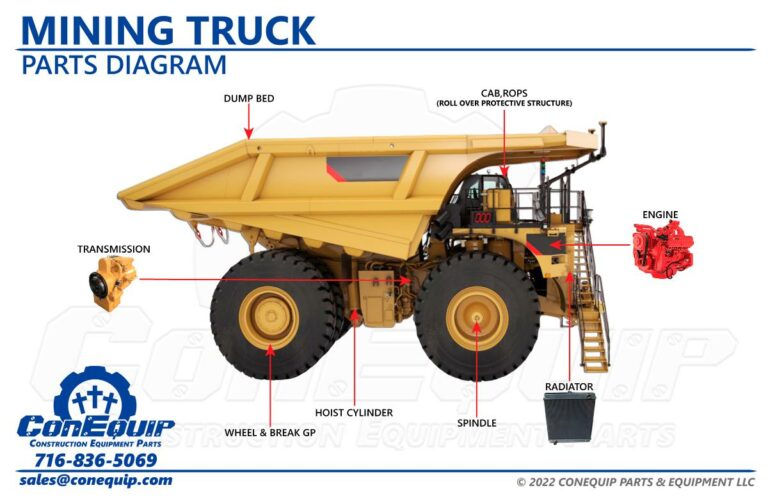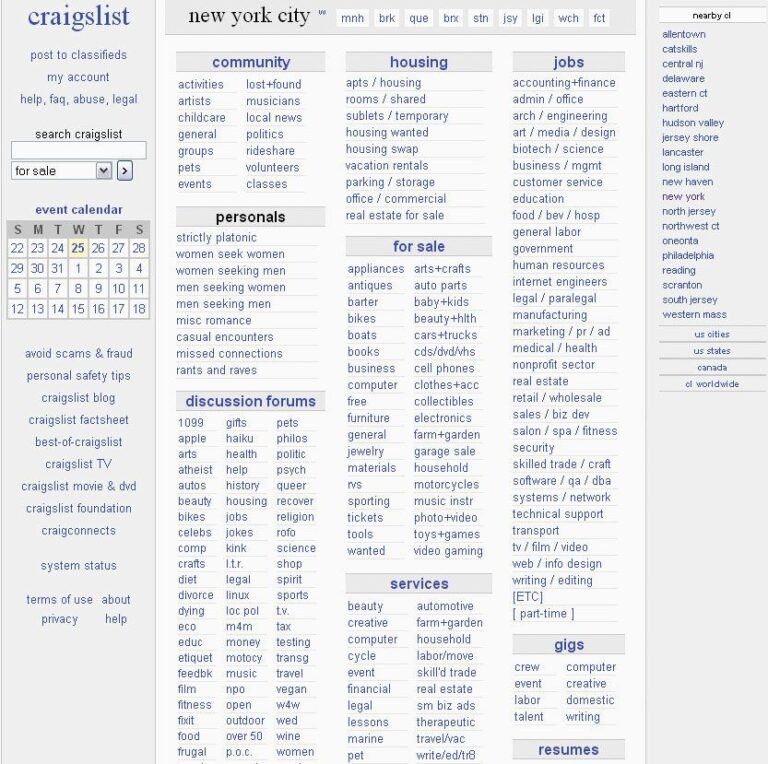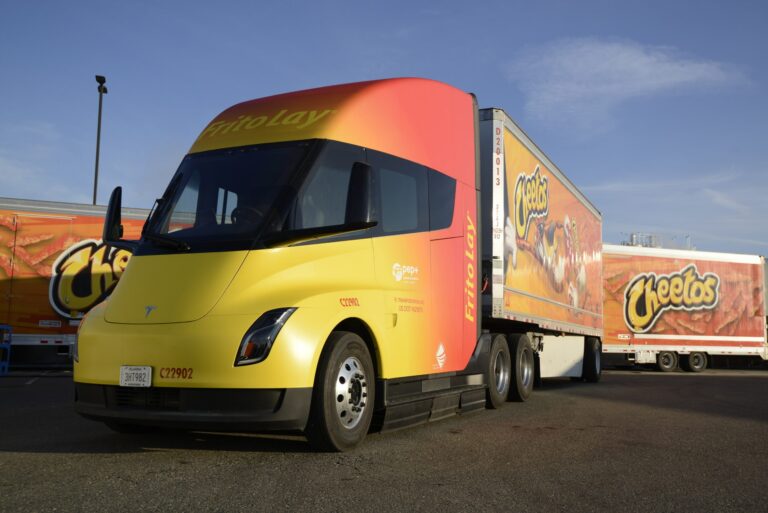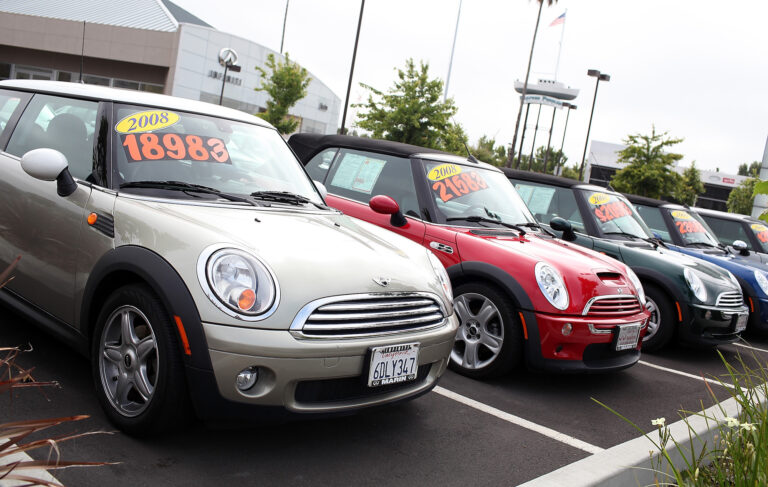Early 80’s Chevy Trucks For Sale: Your Comprehensive Guide to Finding and Owning a Square Body Legend
Early 80’s Chevy Trucks For Sale: Your Comprehensive Guide to Finding and Owning a Square Body Legend cars.truckstrend.com
Introduction: The Enduring Appeal of the Square Body
The early 1980s represent a golden era for American pickup trucks, particularly for Chevrolet. Nestled within the iconic "Square Body" generation (1973-1987), the trucks produced between 1980 and 1987 stand out as a unique blend of classic utility, rugged aesthetics, and burgeoning modern features. These aren’t just vehicles; they are rolling pieces of Americana, embodying a spirit of durability and straightforward design that resonates deeply with enthusiasts today.
Early 80’s Chevy Trucks For Sale: Your Comprehensive Guide to Finding and Owning a Square Body Legend
Whether you’re a seasoned collector, a first-time classic car owner, or simply someone seeking a reliable and character-filled daily driver, an early 80s Chevy truck offers an unparalleled blend of nostalgia, customization potential, and an increasingly appreciating value. From the robust C10 and K10 pickups to the versatile Blazer and Suburban, these trucks offer a gateway into a vibrant automotive community and a rewarding ownership experience. This comprehensive guide will navigate you through the world of early 80s Chevy trucks for sale, offering insights, practical advice, and everything you need to know before making your purchase.
Understanding the Early 80s Chevy Truck Lineup (1980-1987 Square Body)
To embark on your search for an early 80s Chevy truck, it’s crucial to understand the diverse range of models and configurations offered during this period. The "Square Body" designation refers to the distinct, angular styling that debuted in 1973 and received significant updates throughout its lifespan, particularly in the early 80s.
-
Model Designations:
- C-Series: Denotes a two-wheel-drive (2WD) configuration.
- K-Series: Denotes a four-wheel-drive (4WD) configuration.
- 10/1500: Half-ton light-duty trucks (e.g., C10, K10). These are the most popular for customization and daily driving.
- 20/2500: Three-quarter-ton medium-duty trucks (e.g., C20, K20). Often used for heavier hauling or towing.
- 30/3500: One-ton heavy-duty trucks (e.g., C30, K30). Workhorses, often found with dual rear wheels (duallies).

-
Body Styles:
- Regular Cab: The classic single-row seating pickup.
- Extended Cab (Crew Cab): Offered additional seating in the rear, primarily for the C30/K30, but also available on some C10/K10 later in the run.
- Short Bed (Fleetside/Stepside): Typically 6.5 feet, popular for aesthetics and maneuverability.
- Long Bed (Fleetside/Stepside): Typically 8 feet, ideal for utility and hauling.
- Blazer (K5): A two-door SUV built on the short-wheelbase K-series chassis, often with a removable hardtop. Highly sought after.
- Suburban: A full-size SUV available in C and K series, offering significant passenger and cargo capacity.
-
Engine & Transmission Options:
- Gasoline Engines: A wide array of inline-six and V8 engines were available.
- Inline-6: 250 ci, 292 ci (reliable but less powerful).
- Small Block V8: 305 ci, 350 ci (the venerable Chevy small block – powerful, incredibly reliable, and with massive aftermarket support). The 350 is generally the most desirable.
- Big Block V8: 454 ci (less common in pickups but available, offering immense torque for heavy-duty applications).
- Diesel Engine: 6.2L Detroit Diesel V8 (introduced in 1982, known for fuel efficiency but less power than gas V8s).
- Transmissions: Manual (3-speed, 4-speed, SM465 "granny low") and automatic (TH350, TH400, and the overdrive 700R4 which became more common later in the 80s for better fuel economy).
- Gasoline Engines: A wide array of inline-six and V8 engines were available.
Understanding these variations will help you narrow down your search and identify the specific early 80s Chevy truck that best fits your needs and budget.
Why Invest in an Early 80s Chevy Truck? Benefits and Appeal
The allure of the early 80s Chevy truck goes far beyond simple transportation. These vehicles offer a unique set of benefits that make them incredibly attractive in today’s market:
- Iconic Design & Aesthetics: The "Square Body" design is instantly recognizable and timeless. Its clean lines and rugged stance exude a classic American charm that continues to turn heads.
- Durability and Simplicity: Built with robust, no-nonsense engineering, these trucks are renowned for their longevity. Their mechanical simplicity makes them relatively easy for the average enthusiast to maintain and repair, unlike many modern vehicles laden with complex electronics.
- Abundant Aftermarket Support: Due to their popularity, the aftermarket for early 80s Chevy trucks is colossal. From reproduction body panels and interior components to performance upgrades for engines, suspension, and brakes, virtually any part you need is readily available, often at reasonable prices.
- Customization Potential: Whether you dream of a slammed street truck, a lifted off-road beast, a concourse-restored showpiece, or a reliable daily driver, the Square Body platform is a blank canvas. The possibilities for personalization are endless.
- Affordability & Appreciating Value: Compared to earlier classic trucks (like 60s Fords or Chevys), early 80s Square Bodies offer a more accessible entry point into the classic vehicle market. Their values have been steadily climbing, making them a potentially sound investment.
- Strong Community: Owning an early 80s Chevy truck connects you to a passionate and supportive community of fellow enthusiasts. Online forums, social media groups, and local car meets provide invaluable resources, advice, and camaraderie.
What to Look For: A Buyer’s Inspection Guide
Finding the right early 80s Chevy truck requires a keen eye and a systematic approach. Here’s a guide to help you assess potential purchases:
- Rust (The Silent Killer): This is paramount. Square Bodies are notorious for rust in specific areas:
- Cab Corners and Rocker Panels: Check thoroughly, especially behind the front wheels.
- Fender Wells: Both front and rear.
- Floor Pans: Look under the carpet and check from underneath.
- Bed Floors: Particularly around the wheel wells and at the front where water can collect.
- Frame: Inspect the frame rails for significant rust, cracks, or repairs, especially near suspension mounting points. Surface rust is common and manageable; structural rust is a major red flag.
- Engine & Drivetrain:
- Cold Start: Listen for excessive smoke (blue/white), knocking, or tapping.
- Fluid Leaks: Check under the truck for oil, coolant, or transmission fluid leaks.
- Transmission: Test all gears. For automatics, check for smooth, timely shifts. For manuals, check clutch engagement and listen for grinding.
- 4WD (K-series): Engage 4WD high and low to ensure proper function.
- Suspension & Steering:
- Test Drive: Listen for clunks, squeaks, or excessive road noise.
- Steering Play: Check for excessive looseness in the steering wheel.
- Tires: Look for uneven wear, indicating alignment issues or worn suspension components.
- Brakes: Check pedal feel (spongy, hard), stopping power, and any pulling to one side.
- Electrical System: Test all lights (headlights, tail lights, turn signals, brake lights), gauges, horn, wipers, and any power accessories (windows, locks, AC/heater fan).
- Interior Condition: Assess the dashboard for cracks (common), seat upholstery wear, headliner condition, and door panel integrity. While often cosmetic, extensive interior damage can be costly to restore.
- Documentation: Ask for the title (ensure it matches the VIN), service records (if available), and any history of major repairs or accidents.
- VIN Decoding: Learn to decode the VIN to confirm the truck’s original year, engine, and factory options. This helps prevent misrepresentation.
- Pre-Purchase Inspection (PPI): If you’re serious about a truck, especially one from a distance, invest in a PPI by a trusted mechanic familiar with older vehicles. It’s money well spent.
Common Challenges and Practical Solutions
While owning an early 80s Chevy truck is rewarding, it’s not without its quirks. Awareness of common challenges can help you prepare:
- Rust Repair: If you find a truck with rust, factor in significant time and expense for professional bodywork or be prepared for extensive DIY. Solution: Prioritize buying a truck from a dry climate (Southwest, California) to minimize rust issues.
- Worn Components: After 40+ years, many original parts will be worn out. Solution: Embrace this as an opportunity for upgrades. The vast aftermarket means parts are readily available and often improved over OEM.
- Fuel Economy: Older carbureted engines, especially V8s, are not known for their fuel efficiency. Solution: Consider an EFI (Electronic Fuel Injection) conversion for better starting, performance, and economy, or plan for higher fuel costs.
- Lack of Modern Safety Features: No airbags, no ABS, and older seatbelt designs. Solution: Drive defensively, upgrade brakes for better stopping power, and consider modern lighting for improved visibility.
- Finding the "Perfect" Truck: It can take time and patience to locate a truck that meets all your criteria and budget. Solution: Expand your search radius, be flexible with minor details, and be ready to act quickly when a good deal arises.
Tips for a Successful Purchase and Rewarding Ownership
- Set a Realistic Budget: This includes not just the purchase price, but also funds for immediate repairs, routine maintenance, and any desired upgrades or customization.
- Define Your Purpose: Are you looking for a daily driver, a weekend cruiser, a show truck, or an off-roader? Your intended use will dictate the ideal condition, features, and modifications you should seek.
- Research Thoroughly: Spend time online in forums, Facebook groups, and enthusiast websites. Learn about common issues, desirable options, and what to expect from different model years.
- Don’t Be Afraid to Negotiate: Most sellers expect some negotiation, especially if you can point out legitimate flaws that will require repair.
- Join the Community: Once you own an early 80s Chevy, connect with other enthusiasts. They are an invaluable source of knowledge, parts, and support.
- Start Simple with Repairs: If you’re new to working on cars, tackle smaller, easier repairs first to build confidence and understanding of your truck.
Estimated Price Guide for Early 80s Chevy Trucks
Prices for early 80s Chevy trucks vary wildly based on condition, specific model, engine, options, and geographic location. This table provides a general range for common models:
| Condition Category | C10 (2WD Short Bed) | K10 (4WD Short Bed) | C20/K20 (3/4 Ton) | K5 Blazer/Suburban |
|---|---|---|---|---|
| Project/Parts Truck (Significant Rust, Non-Running, Needs Full Restoration) | $1,000 – $4,000 | $1,500 – $5,000 | $800 – $3,500 | $1,200 – $4,500 |
| Driver Quality (Runs & Drives, Minor Issues, Needs TLC, Some Rust) | $5,000 – $12,000 | $7,000 – $18,000 | $4,000 – $10,000 | $6,000 – $15,000 |
| Good Condition (Solid, Minimal Rust, Well-Maintained, Minor Cosmetics) | $13,000 – $25,000 | $19,000 – $35,000 | $11,000 – $20,000 | $16,000 – $30,000 |
| Restored/Show Quality (Frame-Off, Concourse, High-End Custom) | $26,000 – $50,000+ | $36,000 – $60,000+ | $21,000 – $40,000+ | $31,000 – $55,000+ |
Note: These are estimated ranges. Highly desirable options (e.g., short bed 4×4 with a strong 350 V8, factory AC) or exceptionally low mileage examples can command higher prices. Prices are also influenced by market demand and regional availability.
Frequently Asked Questions (FAQ)
Q1: What specific years are considered "early 80s" for Chevy trucks?
A1: While the Square Body generation ran from 1973 to 1987, the "early 80s" generally refers to models from 1980 to 1987. The 1981 model year saw a significant refresh with new front end styling that largely carried through the rest of the generation.
Q2: Are parts readily available for these trucks?
A2: Absolutely! Thanks to their popularity, the aftermarket support for early 80s Chevy trucks is immense. You can find virtually any mechanical, body, or interior part, often at reasonable prices, from numerous online retailers and specialty shops.
Q3: Are early 80s Chevy trucks good for daily driving?
A3: Yes, with proper maintenance and potentially some modern upgrades (like an EFI conversion, improved brakes, or better suspension components), they can be reliable and enjoyable daily drivers. Keep in mind they won’t have the fuel economy or safety features of a modern vehicle.
Q4: What’s the main difference between a C10 and a K10?
A4: The "C" designation means it’s a two-wheel-drive (2WD) truck, while "K" signifies a four-wheel-drive (4WD) model. C10s are popular for street builds, while K10s are favored for off-roading or rough terrain.
Q5: What’s the best engine to look for?
A5: The 350 cubic inch (5.7L) small-block V8 is generally considered the best all-around engine. It offers a great balance of power, reliability, and has the most extensive aftermarket support for parts and performance upgrades. The 454 V8 is powerful but less common, and the 6.2L diesel offers better fuel economy but less power.
Q6: How much rust is too much?
A6: Any significant rust on the frame, especially around suspension mounting points or critical structural areas, should be a major deterrent unless you’re planning a full frame-off restoration. Minor surface rust on body panels is manageable, but deep, bubbling rust indicates more extensive issues underneath. Cab corners, rocker panels, and bed floors are common rust traps.
Q7: Can I get financing for a classic truck like this?
A7: Yes, several specialty lenders offer financing for classic and collector vehicles. Interest rates and terms may differ from conventional auto loans, so it’s worth exploring these options.
Conclusion: Embracing the Square Body Legacy
The early 80s Chevy truck, with its iconic "Square Body" design, represents more than just a bygone era of automotive manufacturing. It embodies a philosophy of simplicity, durability, and timeless style that continues to captivate enthusiasts worldwide. Whether you’re seeking a rugged workhorse, a stylish cruiser, or a rewarding restoration project, these trucks offer immense potential.
By understanding the different models, knowing what to inspect, and being prepared for the nuances of classic vehicle ownership, you can confidently embark on your journey to find the perfect early 80s Chevy truck. It’s an investment not just in a vehicle, but in a piece of American history and a vibrant community. The road ahead with your Square Body will be filled with character, capability, and countless memorable miles. Happy hunting!





